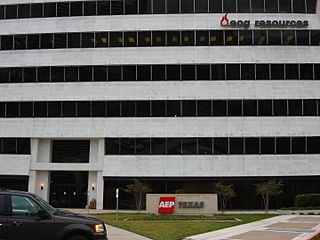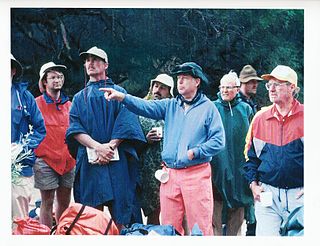Related Research Articles

The history of the petroleum industry in the United States goes back to the early 19th century, although the indigenous peoples, like many ancient societies, have used petroleum seeps since prehistoric times; where found, these seeps signaled the growth of the industry from the earliest discoveries to the more recent.

Williston is a city in and the county seat of Williams County, North Dakota, United States. The 2020 census gave its population as 29,160, making Williston the sixth-largest city in North Dakota. The city's population nearly doubled between 2010 and 2020, due largely to the North Dakota oil boom.

The Mumbai High Field, formerly called the Bombay High Field, is an offshore oilfield 176 km (109 mi) off the west coast of Mumbai, in Gulf of Cambay region of India, in about 75 m (246 ft) of water. The oil operations are run by India's Oil and Natural Gas Corporation (ONGC).

North Sea oil is a mixture of hydrocarbons, comprising liquid petroleum and natural gas, produced from petroleum reservoirs beneath the North Sea.

The East Texas Oil Field is a large oil and gas field in east Texas. Covering 140,000 acres (57,000 ha) and parts of five counties, and having 30,340 historic and active oil wells, it is the second-largest oil field in the United States outside Alaska, and first in total volume of oil recovered since its discovery in 1930. Over 5.42 billion barrels (862,000,000 m3) of oil have been produced from it to-date. It is a component of the Mid-continent oil province, the huge region of petroleum deposits extending from Kansas to New Mexico to the Gulf of Mexico.

EOG Resources, Inc. is an American energy company engaged in hydrocarbon exploration. It is organized in Delaware and headquartered in the Heritage Plaza building in Houston, Texas.

The Sirte Basin is a late Mesozoic and Cenozoic triple junction continental rift along northern Africa that was initiated during the late Jurassic Period. It borders a relatively stable Paleozoic craton and cratonic sag basins along its southern margins. The province extends offshore into the Mediterranean Sea, with the northern boundary drawn at the 2,000 meter (m) bathymetric contour. It borders in the north on the Gulf of Sidra and extends south into northern Chad.

The Williston Basin is a large intracratonic sedimentary basin in eastern Montana, western North Dakota, South Dakota, southern Saskatchewan, and south-western Manitoba that is known for its rich deposits of petroleum and potash. The basin is a geologic structural basin but not a topographic depression; it is transected by the Missouri River. The oval-shaped depression extends approximately 475 miles (764 km) north-south and 300 miles (480 km) east-west.

The Bakken Formation is a rock unit from the Late Devonian to Early Mississippian age occupying about 200,000 square miles (520,000 km2) of the subsurface of the Williston Basin, underlying parts of Montana, North Dakota, Saskatchewan and Manitoba. The formation was initially described by geologist J. W. Nordquist in 1953. The formation is entirely in the subsurface, and has no surface outcrop. It is named after Henry O. Bakken (1901–1982), a farmer in Tioga, North Dakota, who owned the land where the formation was initially discovered while drilling for oil.

Elm Coulee Oil Field was discovered in the Williston Basin in Richland County, eastern Montana, in 2000. It produces oil from the Bakken formation and, as of 2007, was the "highest-producing onshore field found in the lower 48 states in the past 56 years." By 2007, the field had become one of the 20 largest oil fields in the United States.

Fred F. Meissner was an American geologist and engineer who contributed to the fields of geology, geophysics, engineering, petroleum engineering, geochemistry, mineralogy, physics, mining, economic geology, and fishing.
In petroleum geology, source rock is rock which has generated hydrocarbons or which could generate hydrocarbons. Source rocks are one of the necessary elements of a working petroleum system. They are organic-rich sediments that may have been deposited in a variety of environments including deep water marine, lacustrine and deltaic. Oil shale can be regarded as an organic-rich but immature source rock from which little or no oil has been generated and expelled. Subsurface source rock mapping methodologies make it possible to identify likely zones of petroleum occurrence in sedimentary basins as well as shale gas plays.

The Monterey Formation is an extensive Miocene oil-rich geological sedimentary formation in California, with outcrops of the formation in parts of the California Coast Ranges, Peninsular Ranges, and on some of California's off-shore islands. The type locality is near the city of Monterey, California. The Monterey Formation is the major source-rock for 37 to 38 billion barrels of oil in conventional traps such as sandstones. This is most of California's known oil resources. The Monterey has been extensively investigated and mapped for petroleum potential, and is of major importance for understanding the complex geological history of California. Its rocks are mostly highly siliceous strata that vary greatly in composition, stratigraphy, and tectono-stratigraphic history.
The Three Forks Group is a stratigraphical unit of Famennian age in the Williston Basin.

The Oklahoma City Oil Field is one of the world's giant petroleum fields and is located in Oklahoma City, Oklahoma in the United States of America. The field was opened just south of the city limits on December 4, 1928, and first entered Oklahoma City limits on May 27, 1930.

Continental Resources, Inc. is a petroleum and natural gas exploration and production company headquartered in Oklahoma City. The company was founded by Harold Hamm in 1967 at the age of 21 as Shelly Dean Oil Company, originally named for Hamm's two daughters. In 1990, Shelly Dean re-branded itself as Continental Resources. It primarily used hydraulic fracturing and directional drilling to produce from low permeability formations.
As of 2013 the Cline Shale, also referred to as the "Wolfcamp/Cline Shale", the "Lower Wolfcamp Shale", or the "Spraberry-Wolfcamp shale", or even the "Wolfberry", is a promising Pennsylvanian oil play east of Midland, Texas which underlies ten counties: Fisher, Nolan, Sterling, Coke, Glasscock, Tom Green, Howard, Mitchell, Borden and Scurry counties. Exploitation is projected to rely on hydraulic fracturing.
an organic rich shale, with Total Organic Content (TOC) of 1-8%, with silt and sand beds mixed in. It lies in a broad shelf, with minimal relief and has nice light oil of 38-42 gravity with excellent porosity of 6-12% in thickness varying 200 to 550 feet thick.

The Wattenberg Gas Field is a large producing area of natural gas and condensate in the Denver Basin of central Colorado, USA. Discovered in 1970, the field was one of the first places where massive hydraulic fracturing was performed routinely and successfully on thousands of wells. The field now covers more than 2,000 square miles between the cities of Denver and Greeley, and includes more than 23,000 wells producing from a number of Cretaceous formations. The bulk of the field is in Weld County, but it extends into Adams, Boulder, Broomfield, Denver, and Larimer Counties.

Robbie Rice Gries is an American petroleum geologist who was the first female president (2001–02) of the American Association of Petroleum Geologists (AAPG), president of the Geological Society of America (2018–19), and founder of Priority Oil & Gas LLC. Gries is noted to have made some influential progress for women in this field. In 2017, Gries published the book titled Anomalies—Pioneering Women in Petroleum Geology: 1917-2017. Gries is recognized as an unconventional thinker when approaching geological concepts and applications.
Ben M. "Bud" Brigham is an American billionaire oil and gas explorer, corporate executive, and investor.
References
- ↑ Julie LeFever, What's happening at Parshall, North Dakota, North Dakota Department of Mineral Resources Newsletter, Mar. 2008, v.35 n.1.
- ↑ US Energy Information Administration, Bakken oil production.
- ↑ Zawadzki, Sabina (21 November 2013). "Analysis: Bakken drillers undaunted by local oil prices under $80". New York. Reuters. Archived from the original on 24 November 2013. Retrieved 7 January 2015.
- ↑ M. S. Johnson, 2011, "Discovery of Parshall Field, North Dakota," in John W. Robinson, Julie A. LeFever, and Stephanie B. Gaswirth (eds.) The Bakken – Three Forks Petroleum System in the Williston Basin, Rocky Mountain Association of Geologists (www.rmag.org)
- ↑ Johnson, Michael (2020). "An Oil Trap Unlike Any Other". AAPG Explorer. 41 (1): 18–19. Retrieved 8 January 2020.
- ↑ How to discover an elephant sized field, E&P Magazine, 2009
- ↑ Louise S. Durham, "Experience paid off at Parshall," AAPG Explorer, June 2009.